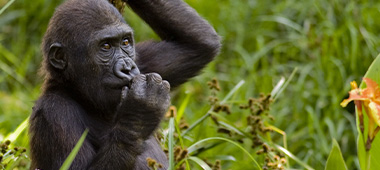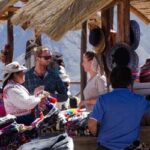Today marks the third iteration of World Gorilla Day, an annual event to raise awareness for the conservation and protection of the world’s mountain gorilla population. The event started on 24th September 2017, the fiftieth anniversary of the Karisoke Research Centre in Rwanda’s Volcanoes National Park. The centre was founded by legendary primatologist and conservationist, Dian Fossey.

Often renowned as a key factor in the prevention of the extinction of the mountain gorillas that reside in the area around the centre, the value of Fossey’s research is still widely appreciated today. Fossey had a passionate affinity with all manner of animals since her youth. This passion would later lead her to Africa and ultimately the Virunga mountains – the only home of the mountain gorilla. Originally based on the Congan side of the mountains before being forced from the country due to civil unrest, Fossey founded the Karisoke Research Centre on the Rwandan side of the mountains on September 24th 1967. She dedicated her entire life to studying and protecting the local gorillas from poachers, putting her own life on the line in the process. Her 15 years of living amongst the gorillas culminated in the publishing of her book Gorillas in the Mist, which was later adapted into a Hollywood movie. Fossey was murdered in 1985 and whilst much mystery surrounds the circumstances of her death it is considered by many to have been the work of a poacher in protest over her extensive conservation efforts. Operated by The Dian Fossey Gorilla Fund International (DFGFI), World Gorilla Day acts as a contemporary symbol of the importance of Fossey’s legacy.
The event not only helps to raise awareness about the ultimate fragility of these mighty creatures, but also makes a conscious effort to do whatever is possible to help save them and their ecosystem from all that threatens them. Their most recent campaign, labelled “Gorillas on the Line…Answer the Call”, aimed to outline the importance of recycling your mobile phones, tablets and MP3 players due to the use of coltan in the manufacture of such devices. Coltan is an ore that can be found in abundance around the habitat of the mountain gorillas, making them extra prone to habitat destruction and other harmful contact with humans. Recycling of mobile devices negates the need for such extensive mining in the gorillas’ habitat, in turn limiting any potential harm that may come their way. Last year’s efforts saw over 12,000 such devices recycled and over $6,000 raised to help conservation efforts in the area.

A recent population rise to around 1,000 members has seen the mountain gorillas’ status change from critically endangered to endangered. This is a massive victory for the Dian Fossey Gorilla Fund International, but the battle is far from over. Any effort to raise awareness for their cause could prove vital in the ultimate prevention of the mountain gorillas’ extinction.
As Fossey rather aptly wrote in her final diary entry:
When you realize the value of all life, you dwell less on what is past and concentrate more on the preservation of the future.
Spread the love



